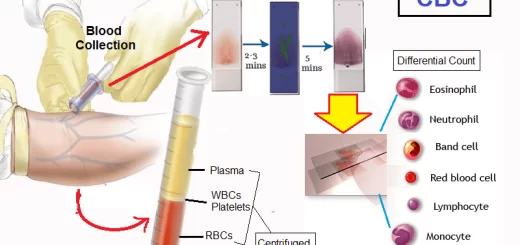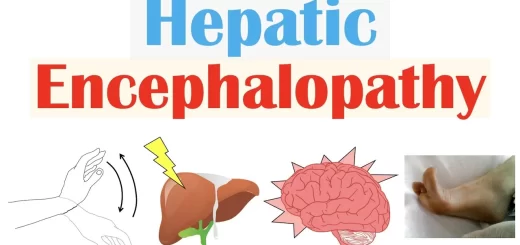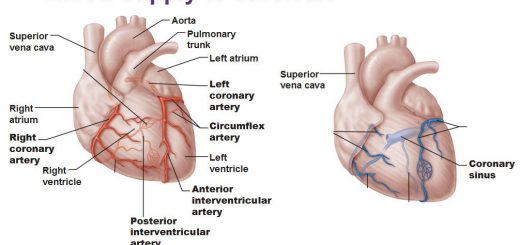Cardio-Pulmonary problems in Liver Cirrhosis and Hepatopulmonary syndrome
The hyperdynamic circulatory syndrome, secondary to portal hypertension, probably contributes to the development of some of these cardiopulmonary complications, Preoperative evaluation prior to liver transplantation has undoubtedly increased the number of patients diagnosed with these cardiopulmonary abnormalities.
Cardiopulmonary abnormalities associated with liver cirrhosis
Myocardial dysfunction
- Cirrhotic Cardiomyopathy
Pulmonary vascular abnormalities
- Porto-pulmonary hypertension
- Hepatopulmonary syndrome
Fluid retention
- Hepatic hydrothorax.
- Pulmonary restriction due to ascites.
Cirrhotic Cardiomyopathy
- Mild to latent cardiac alteration that presents with a particular type of high-output cardiac failure in patients with liver cirrhosis of any etiology.
- Different abnormalities have been described in the hearts of patients with liver cirrhosis, but in basal conditions, patients present with a normal or hyperdynamic contractile function.
- Cardiac alterations of cirrhotic cardiomyopathy have been mainly explored using echocardiography and radio-nucleotide stress ventriculography.
- Systolic dysfunction under stress conditions was the first and most frequently described alteration in the hearts of cirrhotic patients.
- The systolic response to moderate exercise is clearly insufficient. One of the interesting findings in cirrhotic Cardiomyopathy is mild left-ventricular hypertrophy.
- Diastolic dysfunction is also a common finding of cirrhotic cardiomyopathy, mainly evidenced by altered echocardiographic parameters that reflect diastolic function.
- Diastolic dysfunction worsens with the presence of ascites and physical Stress.
Porto-pulmonary Hypertension [PPHTN]
- Pulmonary hypertension occurs in the setting of portal hypertension.
- It is a well-recognized complication of chronic liver disease.
- Most of the patients who are currently diagnosed with PPHTN are asymptomatic. This is because many are only detected during evaluation for liver transplantation.
- When PPHTN presents with clinical manifestations, such as dyspnea on exertion, syncope or chest pain, the disease is usually severe, (due to right heart failure).
- Data from clinical history, physical examination, ECG, and chest X-ray might help to infer the finding, but the diagnosis of these diseases requires a high degree of clinical suspicion by the physician.
- The most important screening tool is transthoracic Doppler echocardiography, which permits indirect signs of pulmonary hypertension and estimates the pulmonary artery systolic pressure by measuring the systolic peak flow rate during tricuspid regurgitation.
- Different studies have shown that when the estimated pulmonary artery systolic pressure is above 40 mmHg. PPHTN is strongly suggested. The negative predictive value of Doppler echocardiography is very high, but the final diagnosis of PPHTN is based on cardiac catheterization.
- We can’t do cardiac transplantation on a patient whose estimated pulmonary systolic pressure is above 60 mmHg. We should check pulmonary artery systolic pressure, especially before liver transplantation.
Diagnostic criteria
- Portal hypertension.
- Mean artery pressure >25mmHg.
- Capillary wedge pressure > 15mmHg.
- Pulmonary vascular resistance > 120.
Hepatopulmonary syndrome (HPS)
- Pulmonary vascular dilations occur in a subgroup of patients with chronic liver disease and/ or portal hypertension causing impaired oxygenation.
- Different degrees of pulmonary vasodilation can be detected in as many as 40% of cirrhotic patients and up to 8 to 15% will develop impaired oxygenation resulting in significant functional limitations.
- This occurs due to an increase in nitric oxide (NO).
- The pathogenetic hallmark of HPS is microvascular dilatation within the pulmonary arterial circulation.
- These changes may result from decreased pre-capillary arteriolar tone alone or could involve additional mechanisms such as angiogenesis, remodeling, and vasculogenesis.
- Two types of lesions have been demonstrated:
- Diffuse precapillary and capillary dilations (80%).
- Direct arteriovenous communications (20%).
Diagnostic criteria
- Chronic liver disease.
- PaO2 > 70 mmHg or alveoli-arterial oxygen gradient < 20 mmHg
- Intrapulmonary vascular dilation.
Clinical features
- Symptoms of chronic liver disease: Most patients, while a minority experience dyspnea as an initial symptom.
- Intense hyperdynamic syndrome with high cardiac output: Usually
- Spider nevi: its clinical utility is low.
- By contrast, the presence of clubbing and cyanosis appears to be very specific.
- Most patients complain of dyspnea during follow-up, which might be accompanied by platypnea (breathing worsens during sitting or standing in contrast to orthopnea which occurs in heart failure) and orthodoxia, an increase in dyspnea and arterial desaturation respectively, induced by standing and relieved by reclining, This results from a gravitational increase in blood flow through dilated vessels in the lung bases.
Tests
- In patients with liver disease found to have dyspnea or clubbing, or in those undergoing transplant evaluation, pulse oximetry is a simple, non-invasive screening test for hypoxemia and a decreased SpO2 should lead to arterial blood gas (ABG) analysis.
- However, caution must be exercised in interpreting a” normal” SpO2 as pulse oximetry may overestimate SaO2 in nearly one-half of patients with cirrhosis.
- Breathing 100% oxygen helps to distinguish vascular dilation from anatomic shunting. In the former (vascular dilation), there is a normal increase in pO2, while in the latter (anatomic shunting) there is no improvement in pO2.
- In the absence of concomitant (chest) disease, Chest X-rays and pulmonary function tests are normal in HPS.
Intrapulmonary vasodilation can be diagnosed by:
- Contrast echocardiography with agitated saline.
- Lung perfusion scanning with macroaggregated albumin particles.
- Pulmonary angiography.
You can subscribe to science online on Youtube from this link: Science Online
You can download Science Online application on Google Play from this link: Science Online Apps on Google Play
Gastro-esophageal varices cause, treatment, and therapy of variceal bleeding
Liver Cirrhosis causes, symptoms, treatment & stages, Liver Biopsy and treatment of PHTN
Viral hepatitis, HDV symptoms, Treatment of acute HCV, Occult hepatitis C and HEV
Acute Hepatitis Causes, Diagnosis, and Treatment, Chronic hepatitis and Liver biopsy
Portal Venous System, Histological structure of Liver, portal vein and its tributaries
Liver development, congenital anomalies, function & Pancreas development




